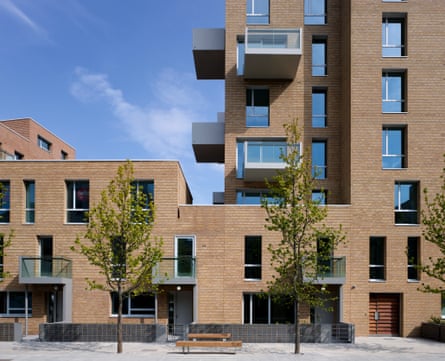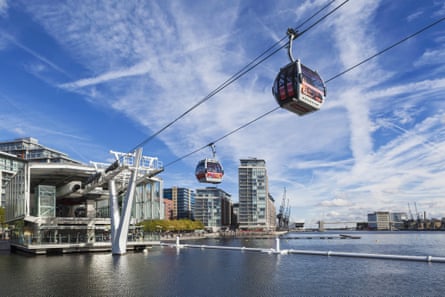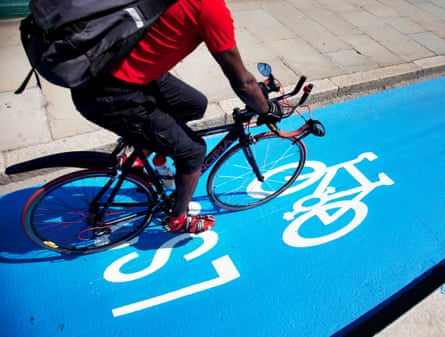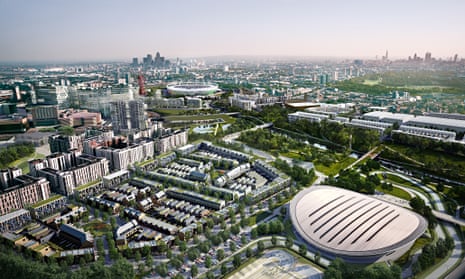Classicist that he is, Boris Johnson will be familiar with the Ephebic oath, sworn by the young men of ancient Athens, that among other things they would leave their city better than they found it. Johnson is technically still mayor of London for another year, but it’s clear that his attention is now on that special corner of the capital that is the parliamentary constituency of Uxbridge and South Ruislip, and on the gateway that it offers either to a place in David Cameron’s next cabinet or to a useful position on the starting grid for the post-Cameron leadership contest. So even if he has not quite left the building, it is a good moment to ask whether, in terms of its physical fabric, Johnson is leaving London better than it was in 2008.
It is certainly different, and will be more so when the delayed effect of construction projects, which take a long time to realise, is felt. The man who campaigned on the promise not to create a Dubai-on-Thames is now in charge of a city where 263 towers of 20 storeys or more are in the pipeline, many of them Dubai-esque, some of them on the Thames, most of wretched quality and limited usefulness. He has backed the much disliked plans for Mount Pleasant and Bishopsgate Goodsyard. Icons, such as the ArcelorMittal Orbit, the tallest sculpture in Britain, have unfurled. The streets are bright with the blue of bike lanes he has promoted, and red with his reincarnations of the classic Routemaster bus. Out in the Thames estuary shimmers the computer-generated mirage of the island airport he fought for, almost certainly in vain. Less conspicuously but more usefully there are a number of not-bad housing projects, with such things as larger balconies and higher ceiling heights than they might otherwise have had.

His legacy, indeed, is a surprising combination of the spectacular and the workaday, where the well-known figure of Johnson the media tart sometimes gets in touch with his unexpected wonkish side – or, at least, a side prepared to support wonkery in his underlings. Between these poles are major changes to the city touched by a certain casualness, and an eagerness to attract investment from whatever source.
The classic Johnson project combines an eye-catching proposition and the promise of private sector funding that will leave the public purse unbroached, followed by the revelation of some catches in the small print, the occupation of a piece of the public domain by corporate interests, and the discovery that the project is not turning out as wonderfully as hoped. The classic of these classics is the cable car called the Emirates Air Line, in honour of its sponsor of almost the same name. In return for being the first company to get its name printed (twice) on the underground map, Emirates would, at no cost to the taxpayer, provide an important transport link between Emirates Greenwich Peninsula, close to the O2 arena, and Emirates Royal Docks, a site of future regeneration.

It turned out that the deal came with strings attached, at least until they were revealed in the press and then disowned by the mayor: no construction contracts with companies with connections to Israel; no criticism allowed of the airline, government or royal family of the United Arab Emirates, by either Transport for London or the mayor. Cost overruns meant that the public ended up paying at least £24m for the project, which is used by a fraction of its capacity. By 2013 the total number of users who could be called regular commuters was four; by 2014, zero. Also in this category were the Orbit (which as well as being widely disliked trampled on a nascent plan to connect the Olympic Park better with its surroundings), the ill-conceived Garden bridge, whose wide range of opponents include St Paul’s Cathedral and the Royal Society for the Protection of Birds, and the mercifully unrealised London River Park, which would have floated a string of corporate marketing and hospitality opportunities along a stretch of the north bank.
Yet the same mayoralty has produced a sober document called the London Housing Design Guide, which calmly sets out some basic standards for civilised homes – minimum ceiling heights and room sizes; balconies you can actually use – which, as homes tend to last a long time once built, is an important gift to the future. It was pushed through despite opposition from developers, and with the help of mayorally supported pilot projects such as the St Andrews development in east London, and has led to an outbreak of decent, dignified housing where formerly there was junk. Some of its recommendations are now being applied to housing across the country.

There are things called housing zones, which promise to apply design and infrastructure investment intelligently to the provision of new homes, even if they risk forgetting other vital uses of the city, such as places of work, in their quest for dwellings. Johnson has also made declarations of love for the city’s public spaces and high streets, which has resulted in brutal traffic gyratories being rearranged, upgrades of parks and pavements, the “decluttering” or removal of superfluous barriers and signs, and such things as the impressive-looking, if flawed and expensive, remaking of Exhibition Road in South Kensington. Overall the effect is patchy and sometimes tokenistic, but more is promised for high streets. These works are still more substantial than Ken Livingstone, with an unfulfilled promise of “100 public spaces”, achieved.
Somewhere between the follies and the eyesores at one end and the thoughtful wonkery at the other, come works such as the new Routemaster bus and the development of the Olympic “legacy”. The Routemaster project was an admirable plan to restore the functionalist elegance of the classic London double-decker that ended up with a vehicle that is better looking than recent alternatives, but with technical eccentricities and a blinginess at odds with the spirit of the originals. With the housing being built as part of the Olympic legacy, design has been given enough importance to ensure the hiring of above-average architects, and some intelligent planning, but there are signs that later phases may be dumbed down. There is also the “Olympicopolis” plan to bring institutions such as the V&A and University College London to the area (great), but then overload the site with money-raising housing (is there no alternative?).

The common themes to this new version of London – let’s call it “Johnsondorf” – are a love of headlines combined with a light touch that lets the mayor’s lieutenants get on with their jobs. The best achievements of Boris Johnson’s mayoralty are down to the better people on his staff. Its weaknesses include the inability to co-ordinate the works of different underlings and a tendency to favour the getting of big bucks or instant hits over more considered, longer-term thinking. The resulting landscape is a curious mix: thoughtful but under-funded public spaces overshadowed by crass monuments and investment towers. Off to the side might be some nice Design Guide housing, perhaps a cycle superhighway doing its good work, but crashing through what would otherwise be a pleasant street.
Classicist that he is, Johnson will also be familiar with the system of school grades that runs from alpha plus to gamma minus, with extra minuses or pluses to taste. The Housing Design Guide is an alpha; the new riverscape of towers gamma minus. Overall it’s tempting to recognise the totality of Johnsondorf with an unconventional alpha gamma, but this doesn’t do justice to its awfulness at its worst. Better, as my own Greek teacher did when attempting to assess my efforts with the language, to enlist the 12th letter of the Greek alphabet and award an alpha mu.

Comments (…)
Sign in or create your Guardian account to join the discussion